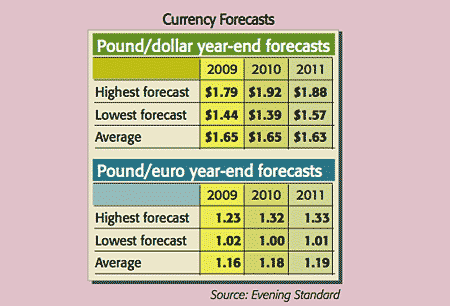
The pound has weakened again, falling back against the dollar and hitting a five-month low around £0.90 to the euro this week before steadying and recovering marginally; some analysts are expecting it to fall to parity with the euro soon.
Canada, meanwhile, has been back in the spotlight for the right reasons, with signs of recovery mounting and the Canadian dollar – otherwise known as the loonie – reaching an 11-month high of $1.06 against its US counterpart. Having hit parity with the US dollar early last year before slumping by almost a fifth, it appears to be on its way back.
What the commentators said
No wonder sterling is suffering, said Richard Fletcher in The Daily Telegraph. The economy’s reliance on housing and finance made us “almost uniquely vulnerable” to the credit crisis; we’ve been printing money like nobody else, the public finances are bad and we’re getting left behind in the global recovery.
Canada, by contrast, “had a better recession than most”, said Lex in the FT. Helped by a comparatively sound banking sector and high exposure to rebounding commodities, growth ticked up in June for the first time in almost a year, and in August the index of leading indicators recorded its largest jump since 2002, although retail sales fell back.
It’s also good news that Canada managed to avoid a huge fiscal stimulus, said Breakingviews’ Martin Hutchinson. Its budget deficit this year will be around 4% and its overall public debt is heading below America’s pre-crisis level.
Given huge fiscal problems all around the world, Canada “stands out as a safe haven”. The economy’s exposure to commodities also bodes well. The loonie “is among the least loony currencies for investors” and looks on track to head back over parity with the greenback.